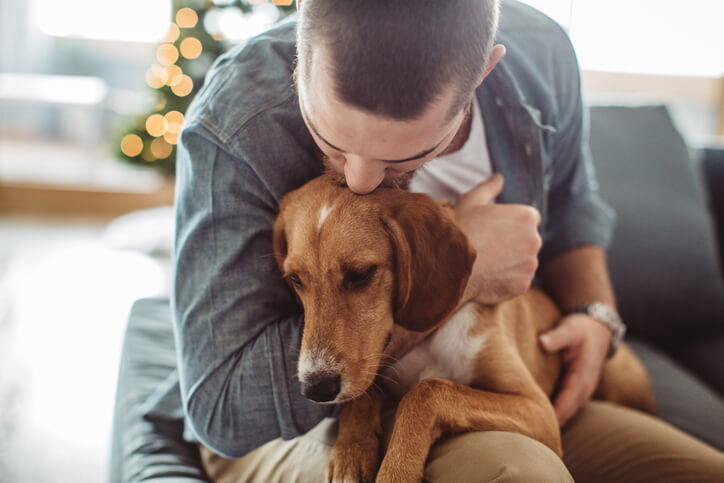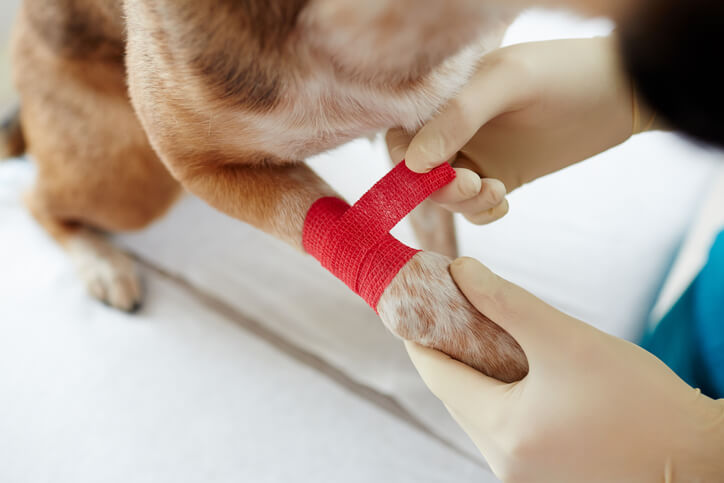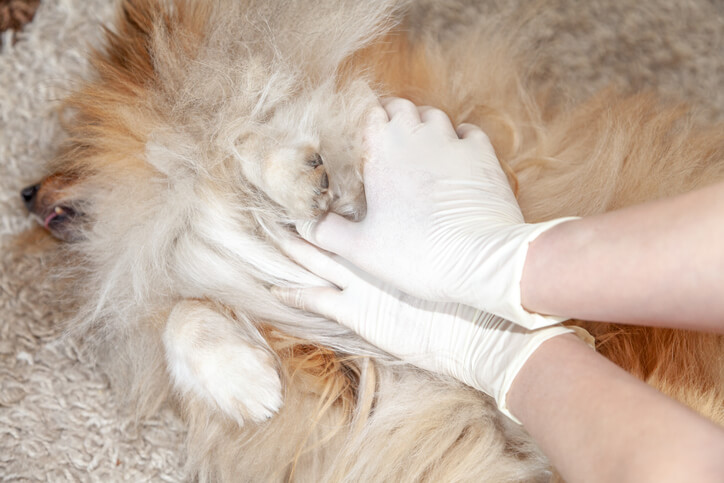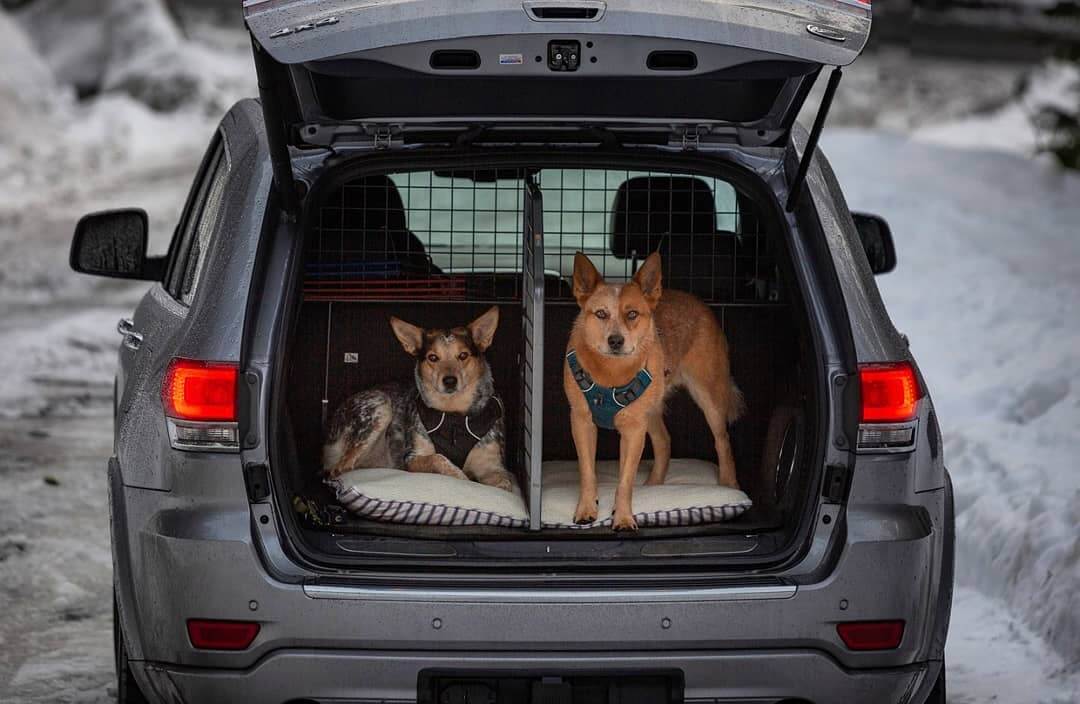Accidents happen, there is no denying that. Your dog may have sniffed out the rat poison or found something they shouldn’t in the backyard. While you should always call your vet when your dog is hurt, it may take a while to get to the vet or before the vet can see you. Knowing some general pet first aid allows you to act during this time, maybe even saving your dog’s life.
It is best practice to take a pet first aid course to learn hands-on and ask questions in real time. However, we’ve gathered a few tips for how to react if you ever find yourself in any of the following situations with your dog.
Poisoning
Dogs are curious by nature and sometimes get into things we really wish they wouldn’t! While most of the time they get into harmless things, there are tons of hazardous items around the house that could cause harm if your dog gets to them – we’ve listed them here. You will want to read the label and see what it tells you to do if humans are exposed – generally, you should do the same for your pet. If your dog is having a severe reaction; seizing, lost consciousness, or having breathing issues, you should call your vet immediately and can also call the toll-free poison control center 24/7 at 888-426-4435, (you’ll have to pay a fee for the consultation). Whomever you choose to call, try to have the following available:
- Breed, age, sex, weight
- Symptoms
- What they were exposed to, how much, and how long ago. Have the product there for reference
- Bring any material your dog may have chewed or vomited up, in a plastic bag to the vet.

Choking
If your dog is choking, they may be pawing at their mouth, making sounds when breathing or coughing, and even have blue lips / tongue. If they are still breathing, keep them calm and get them to the vet asap. Look into their mouth and see if you can remove the object, careful not to push it farther down the throat. Don’t try too hard to remove it this way – if it does not come easily then lay your dog down and place both hands on the side of your pet’s rib cage and apply firm, quick pressure. Try to push the air out of the lungs sharply and dislodge the object, repeating until you get to the vet or the item is dislodged.
Shock
If your dog has been severely injured or frightened, they may enter a state of shock with any of the following symptoms; a weak pulse, shallow breathing, dazed eyes, and sometimes fall unconscious. Keep them warm and quiet while you transport them to the vet. If they are unconscious, keep their head level with the rest of the body.
Burns
If your dog endures a chemical burn, flush the burn immediately with water and keep them from licking the area. If it is a severe burn, quickly apply ice water to the burned area.
Bleeding
Internal – your pet could be bleeding internally if they are bleeding from the nose, mouth, rectum, coughing up blood, blood in urine, have pale gums or a weak and rapid pulse. There is not much you can do at home in this case, so keep your dog warm and quiet and transport them to the vet immediately.
External – Apply a clean, thick, gauze pad over the wound with your hand, holding pressure for a minimum of 3 minutes until the blood starts clotting and stops bleeding, (this could take a few minutes). If the bleeding is not stopping and the wound is on the legs, you can make a tourniquet, loosening it every 15-20 mins for about 20 seconds. If bleeding is severe, you want to get the vet as quickly as possible to prevent it from becoming life-threatening.

Heatstroke
Pets can succumb to heatstroke very easily and must be treated very quickly to have the best chance of surviving. If you think your dog is having a heatstroke, move them out of direct sunlight immediately and place a cold, wet towel around their neck. Wring out the towel and re-wet every few minutes to cool them down. Pour water or use a hose to run cool water over their body, mainly on the hind legs and abdomen. The water will absorb their body heat so make sure you sweep if off every so often.
Remember to never leave your dog in a car on warm days – the temperature rises to dangerous levels very quickly. Get your dog to the vet immediately if you have done this.
Seizures
If your dog is seizing, make sure there is nothing around them that could hurt them (furniture, etc.) and never restrain them. Time the seizure and when it has stopped, keep them warm and quiet while you call your vet.
Fractures
There isn’t much you can do at home if your dog suffers from a fracture or broken bone. If you have practice with homemade splints, you can attempt to splint it but remember that it could cause more harm if it is done badly. Transport your pet to your vet as soon as possible, placing them on a flat surface for support. Try to secure your dog in the stretcher without putting pressure on the injured area.
If your pet is not breathing
- Call your vet immediately, placing them on speaker-phone or have another person call so you can help your dog.
- Check if they are unconscious. Open the airway by gently pulling their tongue forward and out of the mouth until it is flat. Just as you would if they are choking, check to see if there is anything blocking the airway.
- If you don’t see anything, close your dogs’ mouth and begin rescue breathing by breathing with your mouth directly into the dog’s nose until you see the chest expand. Continue every 4 or 5 seconds until you get to the vet.
If you can’t find a heartbeat

- First, check that your dog is breathing. If they are not, follow the same steps in the section above first.
- Once the airway is secured and you’ve started breathing into their nose, lay your pet on its right side. The heart is located in the lower half of the chest on the left side just behind the elbow. Place one hand underneath the chest for support and the other hand over the heart.
- Press down gently on your pet’s heart about one inch for medium sized dogs, more gently for smaller dogs and less gently for larger dogs.
- Press down 80-120 times per minute for larger dogs and 100-150 times per minute for smaller ones.
- Alternate chest compressions with the rescue breaths, sometimes it is easier with a team. One person performs chest compressions for 4 – 5 seconds and stops long enough to allow the other person to give one rescue breath.
- Continue until a heartbeat, and regular breath returns or you have arrived at the vet, and they can take over.
Hopefully, you will never have to use any of these tips, but if you do, please remember that any emergency should result in calling your vet. These first aid tips are solely meant for helping you get your pet to the vet alive, not a substitute for veterinary care.
Getting your dog to the vet in an emergency can be stressful. With the

Did you find this blog helpful? Make sure you share with your friends so they can be prepared too!